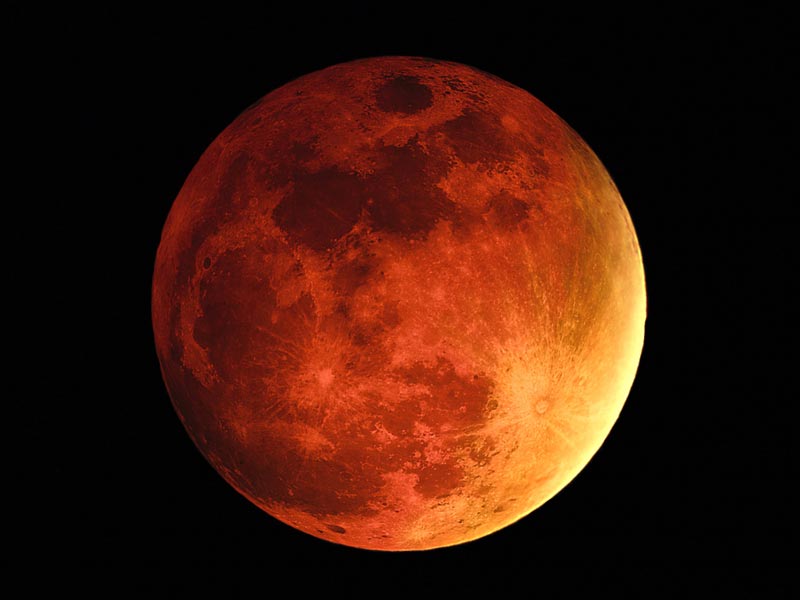The most anticipated and talked about total lunar eclipse was finally visible in the coasts of Australia, New Zealand, Western US, Western Russia and Eastern Asia. The total eclipse was a short on on Saturday; nonetheless, it was dazzling! An Unusually Short Total Lunar Eclipse Early risers in those territories across Canada and US caught […]
The most anticipated and talked about total lunar eclipse was finally visible in the coasts of Australia, New Zealand, Western US, Western Russia and Eastern Asia. The total eclipse was a short on on Saturday; nonetheless, it was dazzling!
An Unusually Short Total Lunar Eclipse
Early risers in those territories across Canada and US caught a glimpse of this exquisite eclipse before dawn on Saturday. The crux or the moment when the entire moon was holistically obscured by the shadow of Earth lasted for a short duration of time – four minutes and 43 seconds.
Though it has been a short holistic lunar eclipse, Mitzi Adams – an astronomer based at NASA stated that the shortest one in the historical records lasted for a minute and 42 seconds. The sky-gazers complained that clouds fluttering all around prevented people from witnessing this show that lasted a totality of three hours and a half.
People Shared Their Emotions And Expressions On Social Media
People hailing from New Zealand, east Australia and Japan viewed this exquisite eclipse during the night time, posting quite a large number of photos on social media sites like Twitter.
NASA reported that during this eclipse on Saturday, the moon appeared reddish owing to sunlight that seeped through the atmosphere of our Earth, thus filtering out the blue light. This effect looked eerie and thus owing to this tongue-in-check display, a nickname was coined as ‘blood moon’.
Weather Acted As Spoilsport
The main disappointment is various parts of the world like Brisbane in Australia was the weather, which acted as a spoilsport. This can be comprehended from the myriad of tweets that the Australians had posted on Twitter, expressing annoyance and disappointment on missing out on this spectacle.
Third One Of Tetrad
Longer eclipses occur when moon passes through the shadow of the earth. However, this one was unusually brief. This total lunar eclipse is considered as the third one in a series of four (tetrad), that were to happen in a row. The first of this tetrad was on April 15, 2014, the second one during September 2014. As per NASA’s estimates, the final one might be on September 28, 2015.


The sky was clear here in westernmost Kentucky. I was able to view almost all of the eclipse. Only a very thin sliver of the moon was visible when the moon dropped too low on the horizon for further observation. Tree branches prevented me from viewing the final phase of the eclipse.
During the early phases of the eclipse the moon was its normal color. It became progressively redder toward the final phase of the eclipse.
I observed the eclipse from 5:00 AM CT to 6:30 AM CT.
If you missed the red moon, don’t fret, it was no big deal at all.
My precocious 5 year old son and I watched it last night. On a scale of 1 to 10 the hype rated it at an 8 or maybe even a 9. “Wow, the moon is going to be red, or maybe pink like the sky at dusk!”, is what I said to my son. However, when the time came, looking at it from our front yard, my son’s response was, “But it’s not red, Daddy!”
We live in the Philippines where we were blessed with not only an ideal view, but an almost perfect show time, 6 PM to 10 PM. Early on, it was blocked by clouds from an approaching tropical depression, but by 8 PM the sky was perfecty clear, and what we saw bore no resemblance to the claims of what we would see. It was a full moon darkened by the gray of Earth’s shadow, nothing more. There was not even a hint of red.
Okay, so we don’t have a telescope, but the news hypersters never claimed one would be needed. We’ve been toying with the idea of making a PVC pipe telescope as a science project and, had we been assured a telescope would be needed to view the red cast, we might have taken the opportunity to build it. But not one news report suggested a telescope was needed to view the red effect. And now, every media image of the “red” (it’s actually more on the brown side) moon is a close up, obviously taken with the aid of a telescope and, having seen it for myself, I have to wonder whether photoshop has been implemented as a secondary aid.